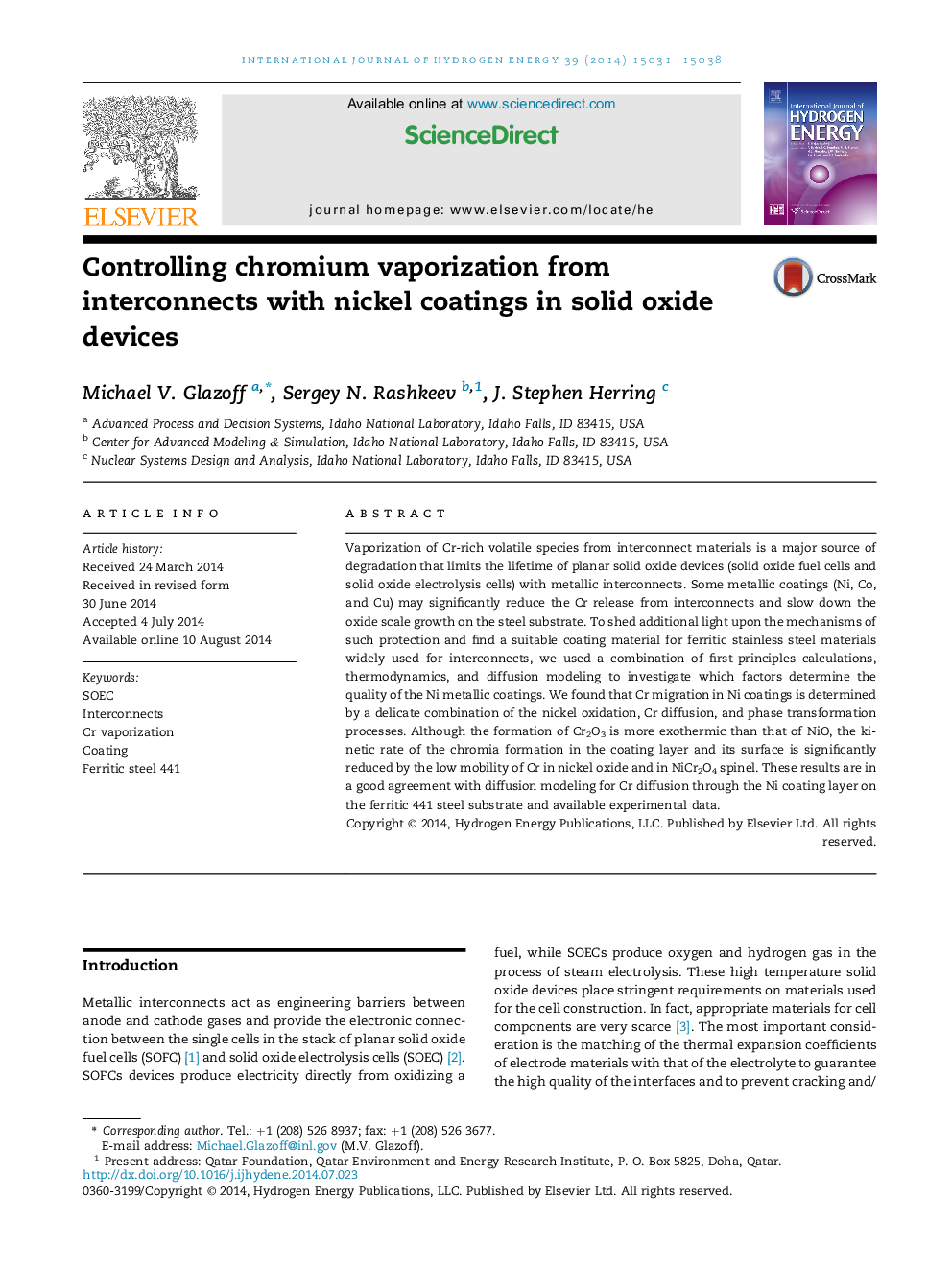| Article ID | Journal | Published Year | Pages | File Type |
|---|---|---|---|---|
| 7718304 | International Journal of Hydrogen Energy | 2014 | 8 Pages |
Abstract
Our calculations indicate that any substitutions of Ni by Cr produce minimal structural distortion of the lattice which is related to the close atomic radii of the both types of atoms. The first important observation is that positioning a Cr atom at the surface layer is energetically unfavorable - moving an individual Cr atom from the surface to the first subsurface layer reduces the total energy of the system by 0.6 eV. At the same time, within one layer (both surface or subsurface) Cr atoms prefer to stay away from each other - the total energy of the system declines by 0.8 eV for the cases when two Cr atoms within one layer are not nearest neighbors (Figures b, c) in comparison with the case when they are nearest neighbors (Figure a). The most energetically unfavorable local structure corresponds to the case when two Cr atoms are nearest neighbors and one of them is positioned at the surface, and another - in the subsurface layer (Figure d). The energy of this structure is about 0.4 eV higher than the energy of the structure with two neighboring surface chromium atoms shown in Figure a. Finally, chromium always has a tendency to leave the surface and to go into subsurface layers, i.e., one would expect that the surface consists of Ni atoms only. This makes Cr species evaporation unlikely.310
Keywords
Related Topics
Physical Sciences and Engineering
Chemistry
Electrochemistry
Authors
Michael V. Glazoff, Sergey N. Rashkeev, J. Stephen Herring,
